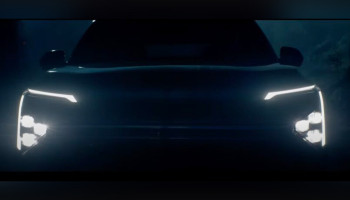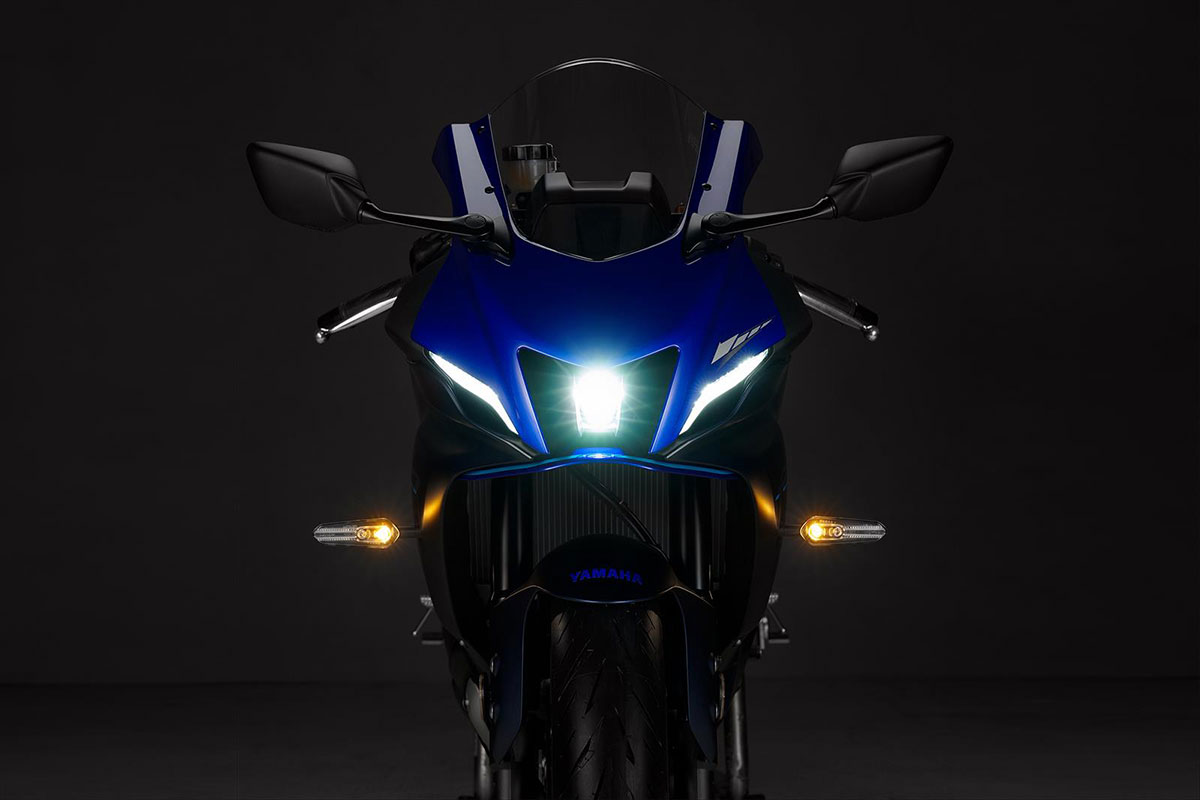 The Yamaha YZF-R7 bears the Yamaha YZF-R1 inspired design as is the case with almost all of Yamaha's recent R-series motorcycles. That said, the Yamaha YZF-R7 has few distinctive design elements, a case in point being the positioning of the LED projector headlight. Unlike the Yamaha-YZF R1, where the twin projector headlights sit below the LED DRLs, the YZF-R7 has a single headlight bang in the center of the front fairing.
The Yamaha YZF-R7 bears the Yamaha YZF-R1 inspired design as is the case with almost all of Yamaha's recent R-series motorcycles. That said, the Yamaha YZF-R7 has few distinctive design elements, a case in point being the positioning of the LED projector headlight. Unlike the Yamaha-YZF R1, where the twin projector headlights sit below the LED DRLs, the YZF-R7 has a single headlight bang in the center of the front fairing.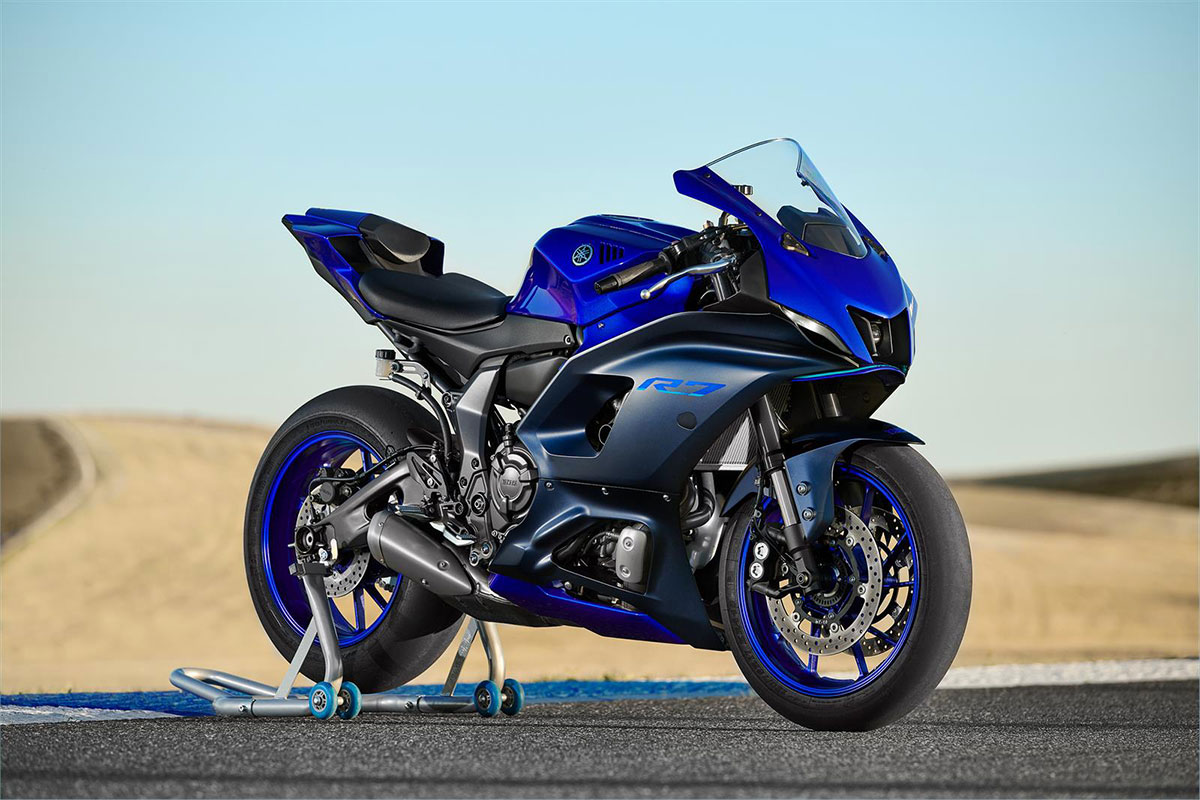 The R7 also has large openings in the side fairing that will help dissipate hot air. The rear-end is sharply raked and in line with the styling on other YZF-R models. Altogether, it looks attractive, after all, the design has been inspired by the YZR-M1 MotoGP machine. The YZF-R7 will be available in two color schemes - Raven Black and Team Yamaha Blue. As expected, the ergonomics are aggressive, with rear-set footpegs and clip-on handlebars. The seat uses the same cushion and material as that on the YZF-R1 and Yamaha says that the riding position is sporty without being too uncomfortable.
The R7 also has large openings in the side fairing that will help dissipate hot air. The rear-end is sharply raked and in line with the styling on other YZF-R models. Altogether, it looks attractive, after all, the design has been inspired by the YZR-M1 MotoGP machine. The YZF-R7 will be available in two color schemes - Raven Black and Team Yamaha Blue. As expected, the ergonomics are aggressive, with rear-set footpegs and clip-on handlebars. The seat uses the same cushion and material as that on the YZF-R1 and Yamaha says that the riding position is sporty without being too uncomfortable.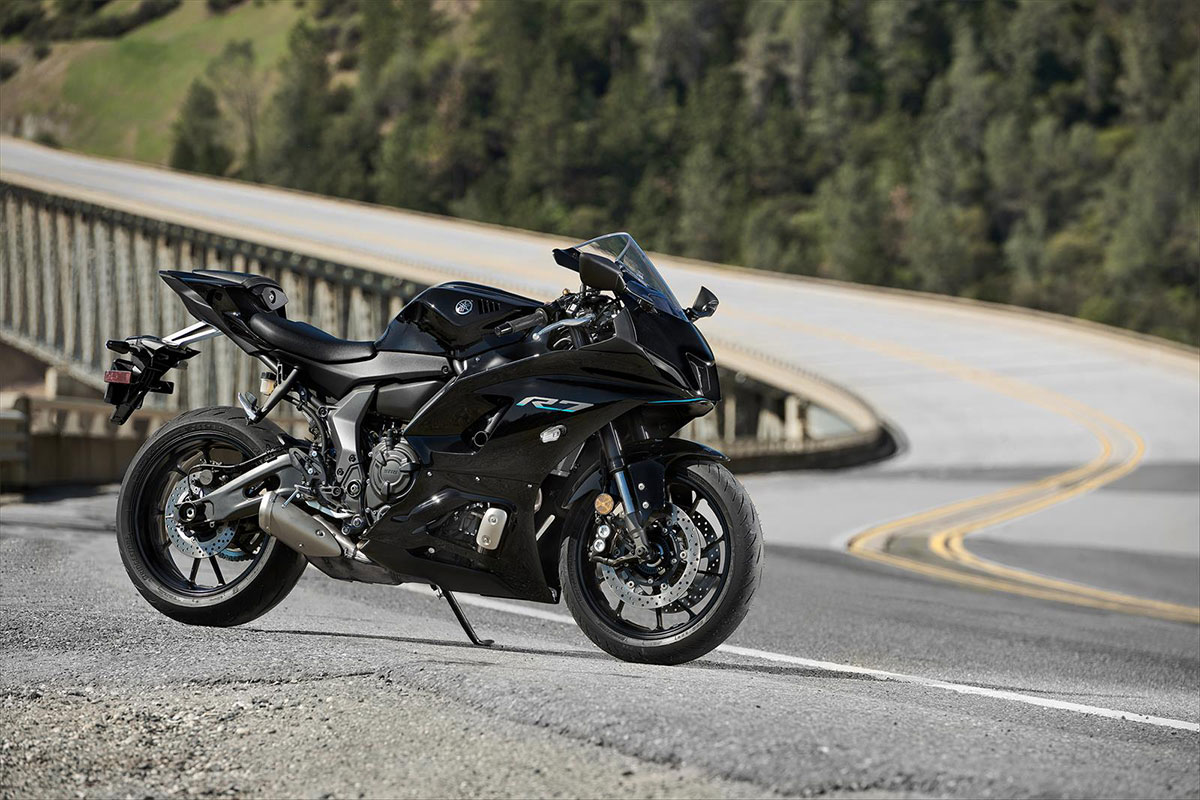 Underneath that bodywork lie the major mechanical parts from the MT-07. The 689cc CP2 parallel-twin engine, named after the cross-plane crankshaft that gives a firing interval that emulates a charismatic 90-degree V-twin, sits in a tubular steel frame with aluminum center braces at the swingarm area to add more rigidity. Yamaha’s US marking material doesn’t mention any figures for the engine, but in Europe, it’s claimed to make 72.4 hp at 8,750 rpm.
Underneath that bodywork lie the major mechanical parts from the MT-07. The 689cc CP2 parallel-twin engine, named after the cross-plane crankshaft that gives a firing interval that emulates a charismatic 90-degree V-twin, sits in a tubular steel frame with aluminum center braces at the swingarm area to add more rigidity. Yamaha’s US marking material doesn’t mention any figures for the engine, but in Europe, it’s claimed to make 72.4 hp at 8,750 rpm.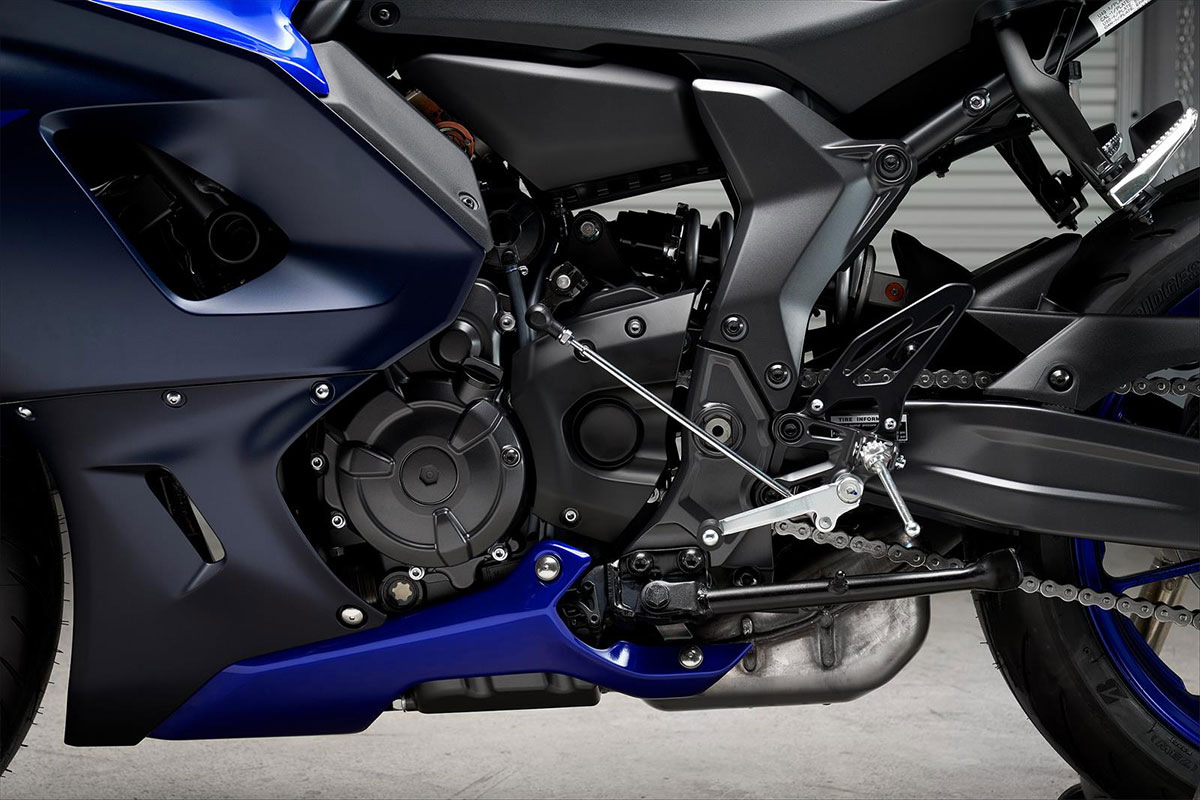
It’s coupled to a lower set of gear ratios in the R7 to improve acceleration, via a new assist and slipper clutch. An upshift-only quick-shifter is available as an option. Don’t let the similarities with the MT-07 fool you; the R7 will offer a very different riding experience. The chassis geometry is tweaked to give a steeper rake at 23.4 degrees, down from 24.5 degrees on the MT, and a shorter 54.9-inch wheelbase.
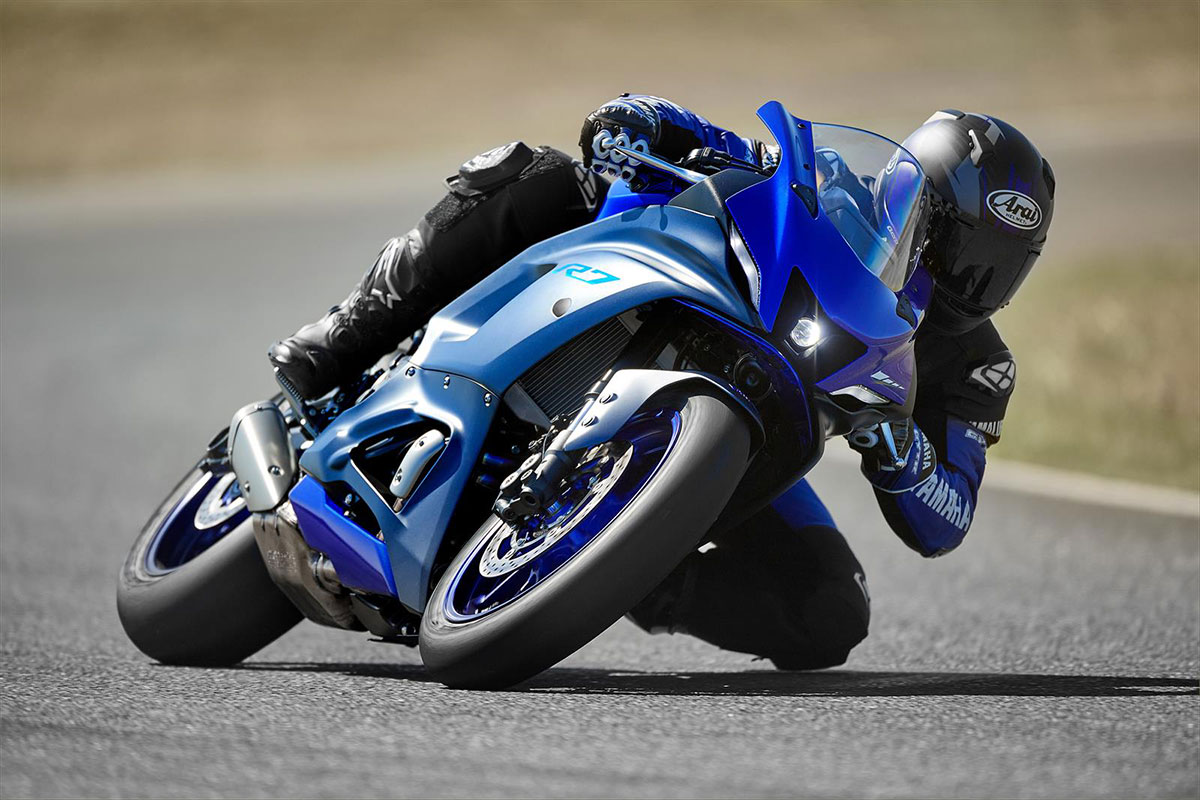
That’s largely down to the fork, which is a new 41mm upside-down KYB unit with adjustable preload, compression, and rebound damping, mounted in a forged alloy lower and cast alloy upper triple clamp. The rear suspension, adjustable for rebound and preload, is also optimized for the R7, and the bike’s ergonomics put more of the rider’s weight over the front. Braking comes from four-pot radial-mount calipers and twin 298mm discs at the front, coupled to a Brembo radial master cylinder.
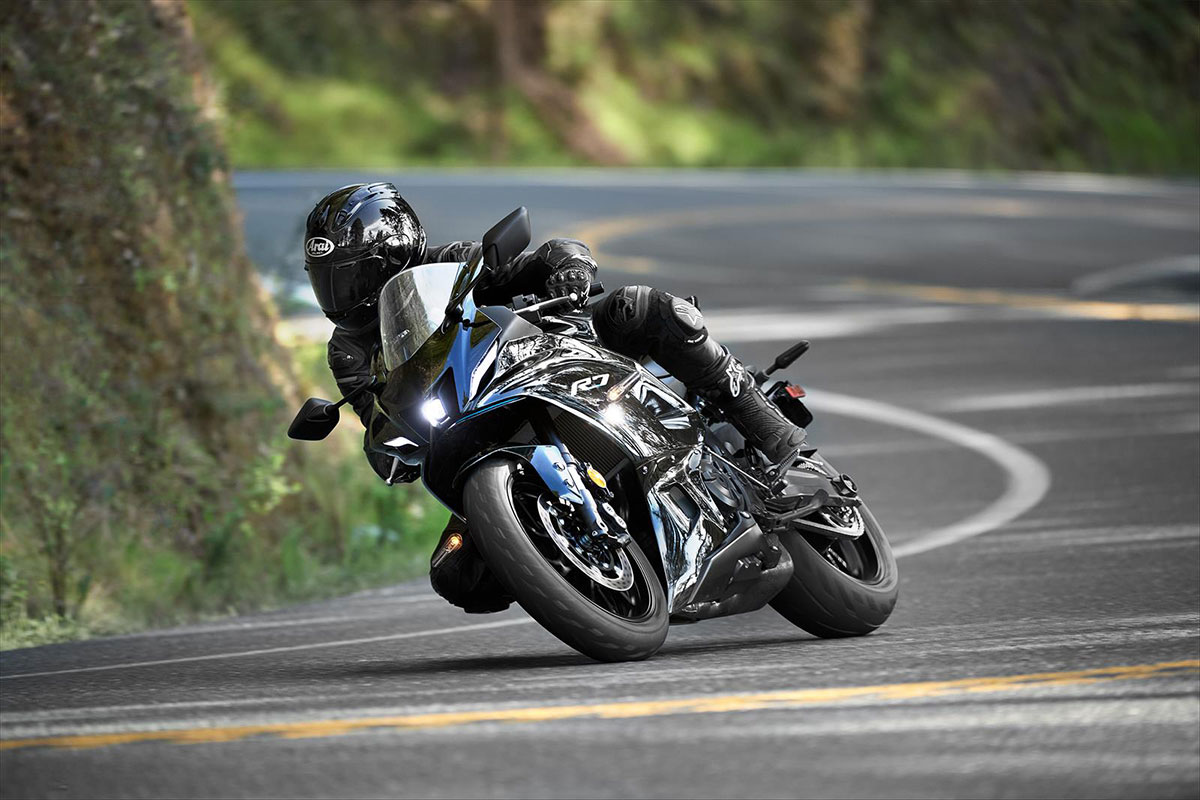 Onboard, you get a new LCD display. While it’s not the sort of color TFT setup seen on many modern bikes, it has an inverted color scheme with pale readouts on a black background. The MSRP of $8,999 positions the R7 a little above established parallel twins like the Ninja 650, but it’s well below the $12,199 of the YZF-R6. The R7 is due to hit dealers in the US in June.
Onboard, you get a new LCD display. While it’s not the sort of color TFT setup seen on many modern bikes, it has an inverted color scheme with pale readouts on a black background. The MSRP of $8,999 positions the R7 a little above established parallel twins like the Ninja 650, but it’s well below the $12,199 of the YZF-R6. The R7 is due to hit dealers in the US in June.















